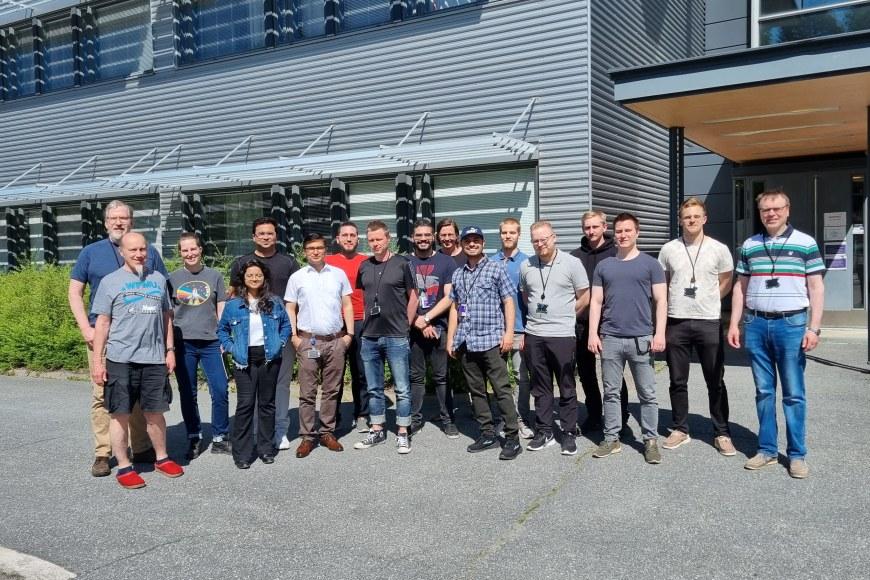Tampere University is leading an EU consortium to enhance eco-friendly energy storage

Supercapacitors, known for their high-power density and rapid charging capabilities, have long been recognised for their potential in revolutionising energy storage. However, despite their eco-friendly nature, commercially available supercapacitors still face limitations in energy density compared with traditional batteries. The ARMS project, funded by the Horizon Europe Graphene Flagship, aims to break through these barriers, paving the way for a new era in energy storage.
Tampere University from Finland is leading the project consortium. The Laboratory for Future Electronics (LFE) group, within the Electronics field, is overseeing project management and coordination, but is also actively engaged in its research activities.
New methods to improve energy density and cycle life
The heart of the project lies in the development of groundbreaking technologies that will enhance the energy density of supercapacitors. The LFE group is focused on significantly increasing both energy density and stability.
“This will be achieved through the application of ultra-thin layers deposited by the atomic layer deposition (ALD) technique onto the graphene-rich electrodes. It enables the modification of the graphene-rich activated carbon electrodes by applying ultrathin conformal coatings of metal oxides at the nanoscale. The process changes the properties of the electrodes, allowing them to store more energy,” the project initiator, emeritus professor Donald Lupo explains.
“These improved electrodes are designed to offer high power density and long cycle life, thereby overcoming the limitations of conventional supercapacitors,” Lupo continues.
Professor Matti Mäntysalo, leader of the consortium, emphasises that the overall goal of the project is ambitious.
“We aim to enhance energy density to over 50 Wh/kg. This means that we are working to make the supercapacitor store more energy relative to its weight, reaching a level comparable to conventional lithium-ion batteries. This improvement is a key aspect of our project, bringing us closer to achieving groundbreaking advancements in energy storage technology,” Mäntysalo explains.
Advancing eco-friendliness in our everyday life and industries
The ARMS project will also introduce new techniques to expand the operational voltage window of supercapacitors, surpassing the conventional limits and further enhancing their performance. These innovations could lead to more efficient and longer-lasting energy storage devices.
“The groundbreaking developments in the ARMS project are set to transform our daily lives and industries. With the promise of longer-lasting portable devices and advancements in sustainable transportation, consumers can anticipate heightened convenience and eco-friendly options,” Lupo says.
“Moreover, the project’s contributions extend to key sectors such as electronics manufacturing and renewable energy, paving the way for a future marked by increased efficiency and reduced environmental impact,” Mäntysalo adds.
Sustainability is at the forefront of the ARMS project. ARMS will implement the sustainable-by-design framework to guide the fabrication processes of supercapacitors. In this way it ensures not only superior electrochemical performance but also environmental responsibility. A life-cycle sustainability assessment (LSA) will further validate the eco-friendliness of the supercapacitors and their manufacturing processes.
According to Mäntysalo, the ARMS project is not just aiming for a technological breakthrough but promoting European industrial leadership in key strategic value chains.
“By fostering collaborations and breakthroughs in the realms of energy storage, ARMS aims to contribute to the industrial leadership goals outlined in the project’s mission: industrial leadership and increased autonomy, with a focus on the security of supply in raw materials,” Mäntysalo says.
ARMS project
- The name of the ARMS project is an acronym derived from the phrase Atomic Layer-coated Graphene Electrode-based Micro-flexible and Structural Supercapacitors
- The four-year project led by Tampere University, Finland, partners five academics, three research institutes, and three industrial partners from six European countries.
- The project is funded by the Horizon Europe Graphene Flagship.
- The kick-off meeting of the ARMS project took place in November 2023 at Tampere University in November 2023.
To learn more about the ARMS project, please visit http://www.arms-project.eu/, where you can also register for the ARMS newsletter.





